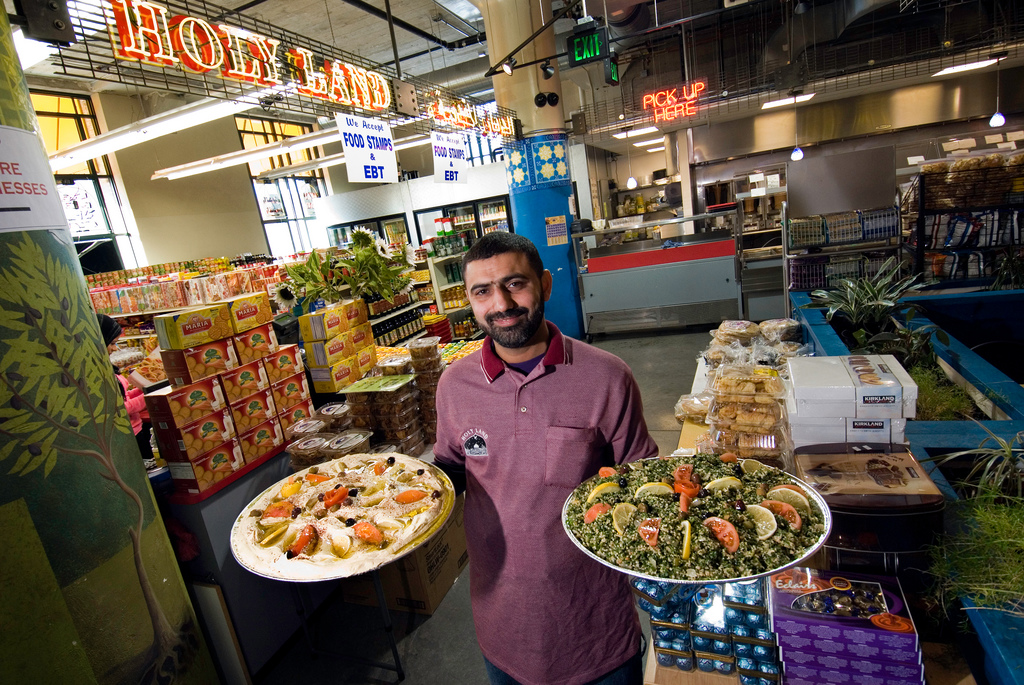Midtown Global Market, in Minneapolis, Minnesota, is a place where vendors hawk fresh produce, baked goods, coffee and espressos, and arts and jewelry. And as its more than 40 different businesses represent people from five continents, the market is one example of how a city can cultivate the entrepreneurial potential of immigrants. Midtown Global Market illustrates how immigrant and refugee small business owners can make a big impact in a local neighborhood. Similar stories of immigrant entrepreneurship are found in local places across the U.S., as a new study describes. The new report from Americas Society/Council of the Americas (AS/COA) and the Fiscal Policy Institute (FPI), by David Dyssegaard Kallick—Bringing Vitality to Main Street: How Immigrant Small Businesses Help Local Economies Grow—explores ways in which immigrant small businesses contribute to local economies. In addition to quantifying the role of immigrants as small business owners in the country’s 50 largest metropolitan areas, the report also takes an in-depth look at how immigrant entrepreneurship has promoted economic growth and neighborhood revitalization in three cities: Philadelphia, Minneapolis-St. Paul, and Nashville.
Specifically, the report examines “main street” businesses—the shops and services that form the backbone of neighborhoods around the country. While immigrants comprise 13 percent of the population, 16 percent of the labor force, and 18 percent of business owners overall, immigrants make up 28 percent of “main street” business owners nationally in 2013. The report defines “main street” businesses as those that fall into three sectors: retail, accommodation and food services, and neighborhood services. In some metropolitan areas, immigrants make up over half of all main street business owners. That includes 64 percent in the Los Angeles metro area, 61 percent in metro San Jose, 56 percent in the Washington, D.C., metro area, and 54 percent in the Miami metro area.
Main street businesses are often establishments with a thin profit margin, as they tend to cater to a smaller customer base and market area. But they’re important for generating neighborhood-level economic growth and revitalization. Regarding particular types of businesses, immigrants make up 61 percent of gas station owners, 58 percent of dry cleaners owners, 45 percent of nail salon owners, and 38 percent of restaurant owners.
Local efforts to support immigrant business owners can help maximize the contributions immigrants make to their cities through their “main street” businesses. In Minneapolis-St. Paul and Philadelphia, immigrants were a driving force in neighborhood-level revitalization, and programs in those cities aimed to bolster immigrant business development. In Nashville, businesses have grown as the overall population has grown and efforts from nonprofits have been a boost. In all three cities, Kallick finds that “what’s good for immigrants is also good for the rest of the population.”
As part of a broader integration strategy, cities and states should pursue smart ideas that strengthen a supportive infrastructure and welcoming environment for immigrant communities. “Paying particular attention to immigrant Main Street business owners can be a very valuable part of that strategy,” Kallick acknowledges, “boosting neighborhood growth and often helping U.S.-born business owners along the way.” Immigrants “are an asset to the cities they join,” he explains. “When that asset is underutilized, it is a loss to the local economy. Finding ways to maximize the potential of immigrant small business owners, and to do so in a way that also creates a positive climate for U.S.-born business owners, is an important project for anyone focused on city-based economic development” in part by leveraging the contributions of their immigrant populations.
One lesson of the past half-century concerning population change, according to Kallick, is that “cities that expect to grow should also expect a growing immigrant population and would do well to help make sure that immigrants who come to an area will thrive,” starting with supporting immigrant entrepreneurship. Indeed, there is a growing narrative of welcoming in cities across the U.S. More and more places are recognizing that it’s in their best interest to be welcoming and could expect economic gain as a result.
Photo Courtesy of Visit Lake Street.
FILED UNDER: Americas Society/Council of the Americas, Business, Economics, Entrepreneurship, featured, Fiscal Policy Institute, Integration, Los Angeles, Midtown Global Market, Minneapolis-St. Paul immigration, Nashville immigration, Philadelphia, San Jose immigration, Washington D.C.


